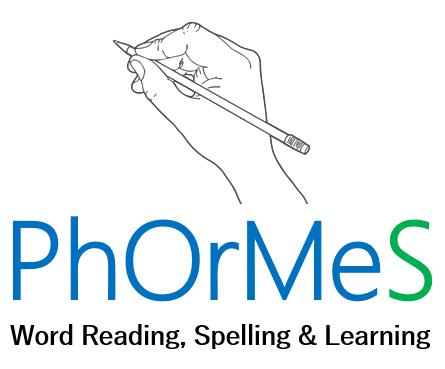
Surround yourself with the best available research base regarding how to teach literacy
-

Think Forward Educators
Join Think Forward Educators, a community of teachers, school leaders, specialists, parents, and researchers. Think Forward Educators advocates for education that allows every child to succeed: Promoting social equity, using the science of learning.
-

Reading Science in Schools
Keep abreast of the latest in literacy and reading science and research with this brilliant Facebook group. Access abundant curriculum resources and collections of readings on the Science of Reading.
-

Spelfabet
Read great blog posts and watch informative videos about best-practice literacy instruction and intervention. Access high-quality, practical resources to assist children with literacy difficulties made by a speech pathologist with years of experience working in the literacy difficulties sphere.
-

The Reading League
Sharing Knowledge, Inspiring Change
The Reading League is a global not for profit, based in the U.S., that promotes knowledge to reimagine the future of literacy education and accelerate the global movement toward reading instruction rooted in science.
-

Core Knowledge Foundation
Deep reading comprehension across a range of text types and content areas requires broad, strong knowledge. Boost your students’ background knowledge with content-rich units on history, geography and much more. A true game-changer for teaching reading comprehension.
-

The Writing Revolution
Ever struggled to boost kids’ writing abilities? Not sure what to do with a whole page filled with so many areas needing work? Want a better way to reach all of your students’ needs in writing? The Writing Revolution is where to start.
-

Five From Five
Find great quality resources regarding evidence-based reading instruction for principals, teachers and parents
-

Education Research Reading Room (ERRR) Podcast
If podcasts are your thing, here’s one that covers an array of topics straight from researchers and authors of quality educational texts. Topics covered include literacy teaching practices, evidence-based instruction, educational coaching and leadership and behaviour management.
-

No More Marking
Looking for a faster, more reliable, more valid way of assessing student writing? Filling in rubrics taking too long and providing unclear results? There’s a better way! Consider the world of comparative judgement at No More Marking.
-

Lifelong Literacy
Yet another outstanding organisation promoting evidence-based practice in all areas of literacy. A one-stop shop for all things literacy PD. Headed by a linguist with an intense passion for improving literacy instruction in schools to ensure all children succeed.
-

MultiLit
An incredible organisation which offers evidence-based literacy products suited to whole class right through to intervention at Tier II and Tier III. Training in programs is available and will set you on the path to better literacy teaching.
-

Explicit, Direct Instruction
“The Power of the Well-Crafted, Well-Taught Lesson”
If you are on the hunt for an excellent, evidence-based whole-school instructional model that will improve your students’ learning in every subject, finish your search with Explicit, Direct Instruction.
*PhOrMeS is designed to use EDI Student Engagement Norms
-

Spalding Education Australia
Spalding Education Australia provides comprehensive, evidence-based literacy professional learning covering the areas of reading, spelling and writing. Check out their MILA 1 & MILA 2 courses for more information. Also buy the text ‘The Writing Road to Reading’ by Romalda Spalding for more information about this brilliant approach.
*PhOrMeS codes bear much similarity to the phonograms from the Spalding Method and those from LEM Phonics and Write2Read which borrow heavily from this method created by Romalda Spalding. Many of the multisyllabic spelling rules in PhOrMeS are also inspired by the Spalding Method as is the method of representing sounds that codes make by using numbers above letters.
